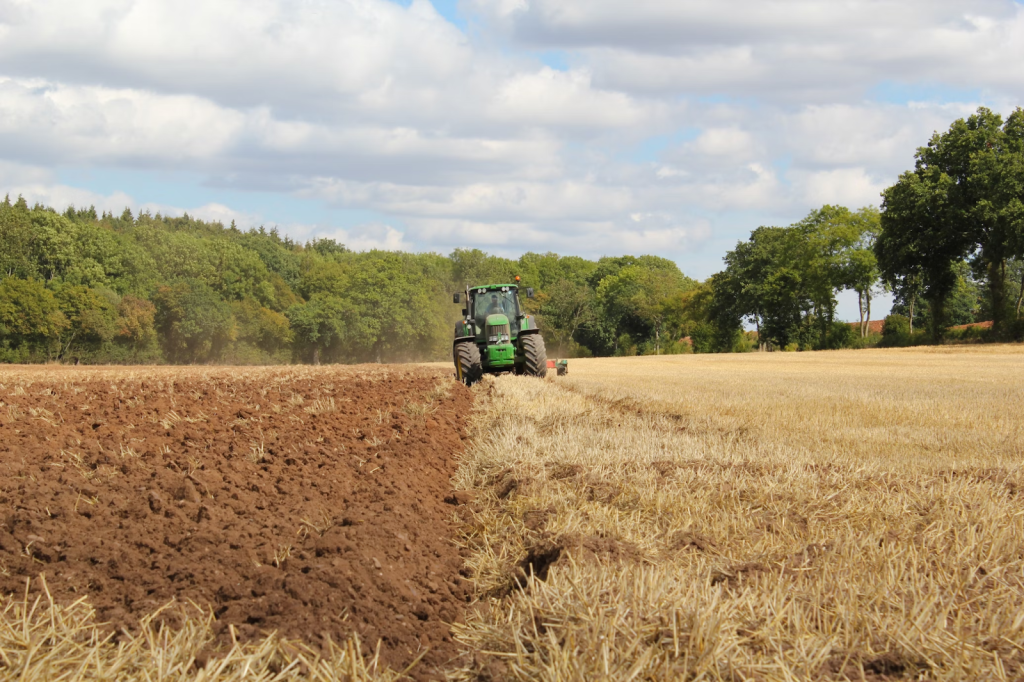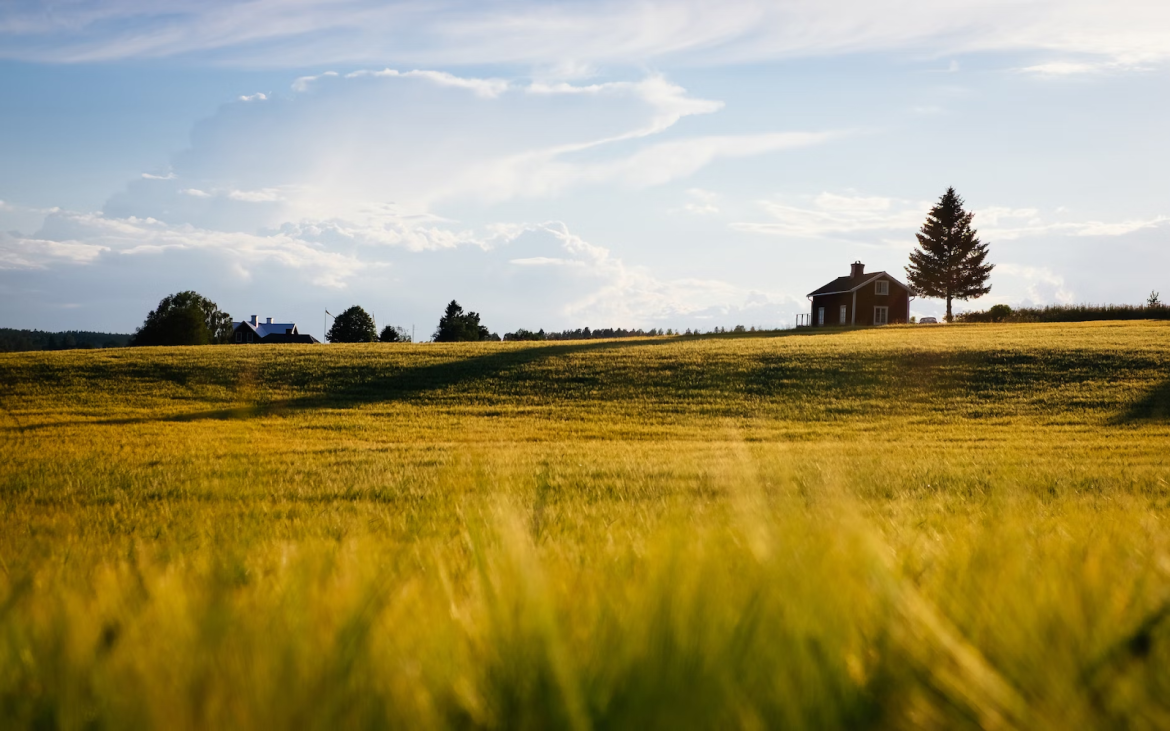You’ve always had that idyllic image in your mind – the one where you’re standing on your own fertile land, with a sea of green waving under the warm sun. It’s a dream many share, but few can navigate the steps to make it a reality.
Buying and cultivating farmland isn’t simply about picking out a plot and tossing seeds into the ground. It’s an intricate process that requires an understanding of farming techniques, knowledge of soil management, and a knack for evaluating potential farmland – skills that you’re about to learn.
In this guide, we’ll take you through each step towards owning and operating your own farmland – from searching for the perfect rural property to securing financing for agricultural property. We’ll break down complex concepts like crop rotation and soil management into simple steps that are easy to follow.
Read on and learn what it takes to turn your dreams of country living into a fruitful reality!
Key Takeaways
- Buying and cultivating farmland is a complex process requiring an understanding of farming techniques, knowledge of soil management, and skill in evaluating potential farmland.
- Embracing farm life means committing to early mornings, hard work, and a deep connection with nature. It requires mastering biology, ecology, and meteorology.
- Choosing the right rural property is crucial, with factors such as location, size, and existing infrastructure playing a major role.
- Securing financing for an agricultural property involves understanding all potential costs – land purchase, equipment needs, infrastructure upgrades, and operating expenses. For US-based aspiring farmers, USDA Farm Service Agency loans are a good option to consider.
- Planning farming operations starts by determining what type of farming you’re interested in (crop farming, dairy farming, etc.), followed by drafting a detailed business plan.
- Implementing soil management techniques like crop rotation and cover cropping can significantly improve soil health over time.
Understanding the Basics of Farm Life
While embracing farm life may start with checking out farms for sale in Ontario or Quebec, it is ultimately much more – it’s a commitment to early mornings, hard work, and a connection with the earth that’ll touch your soul like nothing else.
It begins with understanding the rhythm of nature and learning how each season affects plant growth, livestock health, and soil fertility. You’ll need to become conversant with terms like composting, permaculture design principles, and integrated pest management (IPM).
Knowing when to plant or harvest isn’t simply about following calendar dates; it’s about reading weather patterns and understanding their impact on your crops.
In essence, mastering farm life means diving headfirst into an ongoing education in biology, ecology, and meteorology – all tied together by your dedication to cultivating this land you call home.
Searching for the Perfect Rural Property
Hunting for that ideal plot of rural property isn’t just a pursuit, it’s an adventure! It’s about more than just finding a piece of land; it’s about discovering a space where you can fulfill your farming dreams.
When buying farmland, you’re not simply purchasing property but investing in your future. You’re laying the foundation for your lifestyle and potentially creating a legacy to leave behind. As such, this quest should be approached with due diligence and foresight.
So, how do you go about making this monumental choice? Consider these two key factors:
- Location: This is pivotal because it determines the types of crops or livestock that will thrive on your farm. The climate, rainfall patterns, soil fertility – all these factor into what sort of agricultural activities are viable.
- Size: Your farm’s size should align with your goals as well as your capacity to manage it effectively. A vast tract might seem appealing but could become overwhelming without sufficient resources or help.
- Infrastructure: Check if there are pre-existing structures present on the land, which could save you significant initial costs.
Remember that farming isn’t just an occupation – it’s a way of life steeped in hard work and perseverance. But armed with knowledge and passion for agriculture, you’ll find joy in nurturing growth from the earth itself while sowing seeds for generations to come.

Securing Financing for Agricultural Property
Securing the right financing for your agricultural property can feel like untangling a giant knot, but it’s an essential step in turning that fertile land into a thriving farm.
Start with understanding your financial feasibility – consider all potential costs, including:
- Initial Land Purchase: This is often the most significant investment when starting an agricultural operation. The cost can vary greatly based on factors such as location, size, and quality of the land. It’s important to conduct comprehensive research before deciding on any purchase.
- Equipment Needs: Agricultural operations often require specialized machinery and tools, such as tractors, plows, and irrigation systems. These can be expensive, and their costs should be factored into your budget from the outset. Additionally, consider the ongoing maintenance expenses that will be necessary to keep these machines in working order.
- Infrastructure Upgrades: Depending on the current state of your land, it might necessitate certain enhancements or modifications to make it suitable for farming. This could include building sheds, installing fencing, or setting up drainage systems. While these upfront costs can be substantial, they are necessary investments that will contribute to the long-term success of your farm.
- Operating Expenses: Lastly, don’t forget about the day-to-day costs of running a farm. These include labor wages, feed for livestock, seeds for crops, utilities like water and electricity, insurance premiums, and property taxes, among others.
Getting clear on these numbers will help you understand how much you’ll need to borrow.
Consider different types of loans suitable for farming, such as USDA Farm Service Agency loans, which offer favorable terms and rates specifically designed for farmers.
Next comes the part where you convince lenders that your venture is worth their investment. To do this effectively, you’ll need a comprehensive business plan that includes:
- market analysis
- revenue projections
- detailed farming techniques you plan to implement
Show them how your hands-on experience or knowledge of modern farming methods will ensure productivity and profitability.
Don’t forget to highlight any sustainable practices or innovative technologies you aim to use – these can often sway lenders who are keen on supporting environmentally responsible agriculture.

Planning Your Farming Operations
After securing the funds, it’s time to roll up your sleeves and dive into planning those farming operations. This is a task that’ll test not only your perseverance but also your passion for nurturing life from the earth.
Kickstart this journey by determining what type of farming you’re interested in. This could be anything from crop farming, dairy farming, poultry, or even aquaculture. Each field requires different kinds of skills and resources, so make sure you do thorough research before making any decisions.
For instance, if you’re leaning towards crop farming, understanding soil fertility is crucial. Certain crops thrive in specific soil types. Also, consider factors like climate conditions and market demand for produce.
Now, let’s get down to the nitty-gritty. Drafting a detailed business plan is essential for a successful farm operation. It should outline your goals, strategies for achieving these goals, and periodic timelines for success measurement.
You’ll need to include everything from seed sourcing or livestock procurement strategies to manpower needs and marketing plans. If you’re going organic – a popular trend nowadays – remember that it involves more than just abstaining from chemical fertilizers or pesticides.
It requires careful pest control using natural methods, which can be quite challenging yet rewarding at the same time.
Be patient as nature takes its course — good things take time but are worth waiting for!
Implementing Soil Management Techniques
So, you’ve got your plan in place, and now it’s time to get down and dirty with some serious soil management techniques.
First things first, get to know your soil; it’s more than just dirt. It’s a complex mix of minerals, organic matter, air, and water that supports plant life.
You’ll want to conduct a soil test to determine the pH level, nutrient content, texture, and structure of your soil. This gives you a clear picture of what you’re working with and can help guide decisions about what crops are best suited for your land’s unique characteristics.
Now, let’s dive into specific techniques like crop rotation and cover cropping, which can significantly improve the health of your soil over time.
- Crop rotation involves growing different types of crops in the same area across different seasons or years. This practice helps prevent the build-up of pests and diseases associated with certain plants while also enhancing fertility as different crops deposit varying nutrients into the soil.
- Cover cropping is where you grow specific plants primarily for the benefit of the soil rather than for crop yield. These ‘cover crops’ help suppress weeds, manage soil erosion, and promote biodiversity by increasing populations of beneficial insects and microbes in your land.
Remember that managing your farm’s most valuable asset – its fertile soil – requires patience but is crucially important for long-term success.

Final Thoughts
Embracing farm life and cultivating your own land may seem like an overwhelming undertaking, but with the right knowledge and preparation, it can be an exciting and rewarding journey.
From understanding the basics of farming to securing the right financing, searching for the perfect rural property, planning your operations, and implementing soil management techniques – every step brings you closer to realizing that dream.
Remember, farming isn’t merely about producing crops or raising livestock; it’s about forming a bond with nature, watching your hard work bear fruit (literally), nurturing life from the earth, and feeling an unparalleled sense of achievement. It’s a lifestyle that requires constant learning, dedication, and resilience.
So, are you ready to roll up your sleeves and start harvesting your dreams? With the information provided in this guide, you’re well on your way to becoming not just a landowner but a proud steward of the land. Let the adventure begin!
Was it helpful?

Enamored with the world of golf Jack pursued a degree in Golf Course Management at THE Ohio State University. This career path allowed him to work on some of the highest profile golf courses in the country! Due to the pandemic, Jack began Inside The Yard as a side hustle that quickly became his main hustle. Since starting the company, Jack has relocated to a homestead in Central Arkansas where he and his wife raise cattle and two little girls.

